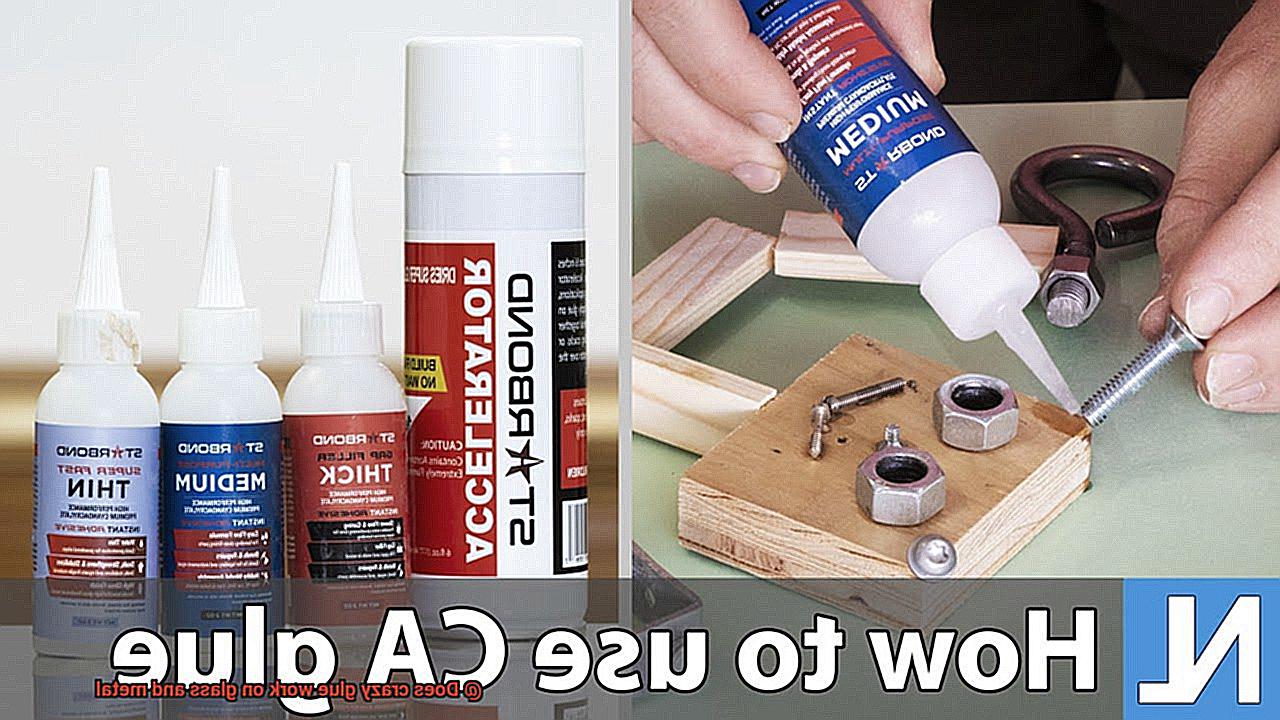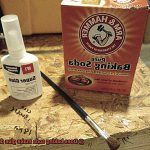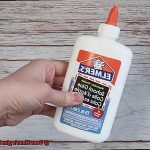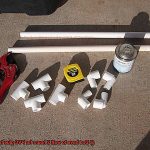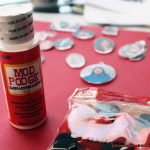Ever been in a tight spot where you needed to fix something made of glass or metal in a hurry? Whether it’s a shattered vase or a broken hinge, Crazy Glue often comes to the rescue. But does it really live up to its adhesive reputation when it comes to these smooth and sometimes tricky materials?
In this blog post, we’ll delve into the effectiveness of using Crazy Glue on glass and metal surfaces. We’ll explore the characteristics of these materials, share application tips, and reveal potential outcomes. So buckle up and get ready to find out if Crazy Glue is the real deal for your repair needs.
Glass surfaces are smooth and low-porosity, making them a challenge for most adhesives. And metal? Well, it’s notorious for being non-porous and difficult to bond with regular glues. But fear not. Crazy Glue claims to have superpowers when it comes to bonding these stubborn surfaces. But can we trust it?
To get the best results with Crazy Glue on glass, cleanliness is key. Make sure that surface is squeaky clean and dry before applying the glue. The slight acidity of the glue helps create a strong bond, but preparation is everything. As for metal, wipe away any oils or debris before applying Crazy Glue – especially if you’re using one of their specialized metal-bonding variations.
Now let’s talk about outcomes. Crazy Glue has lightning-fast drying time – great for quick fixes. However, once it sets, repositioning becomes mission impossible. So be precise during application. Keep in mind that while Crazy Glue is known for bonding various materials together, there might be instances where it’s not the best choice for glass or metal repairs – like when flexibility or resistance to extreme temperatures are required.
Ultimately, whether Crazy Glue works on glass and metal depends on factors like the type of glue, surface preparation, and the nature of your repair. So before you embark on your fix-it adventure, consider the pros and cons to ensure you achieve the best results.
In our upcoming articles, we’ll explore alternative adhesive options and techniques that might just save the day. So stay tuned for more sticky situations.
Advantages of Using Crazy Glue on Glass and Metal
Contents
- 1 Advantages of Using Crazy Glue on Glass and Metal
- 2 Preparing the Surfaces for Bonding with Crazy Glue
- 3 Applying Crazy Glue to Glass Surfaces
- 4 Applying Crazy Glue to Metal Surfaces
- 5 Enhancing Bond Strength with Special Techniques
- 6 Limitations of Using Crazy Glue on Glass and Metal
- 7 Alternatives to Crazy Glue for Bonding Glass and Metal
- 8 Conclusion
When it comes to bonding glass and metal surfaces, crazy glue, also known as cyanoacrylate adhesive, offers several advantages. Its ability to create a strong and durable bond, quick drying time, transparent finish, versatility, resistance to temperature and moisture, and ease of application make crazy glue an ideal choice for various DIY projects and professional applications. In this article, we will explore these advantages in detail and provide helpful tips for achieving optimal results.
Strong Bond:
Crazy glue forms an instant and durable bond when applied to glass and metal surfaces. It adheres well to smooth and non-porous glass surfaces, creating a reliable bond that can withstand everyday use. When bonding metal surfaces, it takes advantage of their rougher texture and increased surface area, ensuring a strong and lasting connection.
Versatility:
Crazy glue is a versatile adhesive that can be used on a wide range of materials, including glass and various types of metal such as stainless steel, aluminum, brass, and copper. Whether you’re repairing a broken glass object or bonding metal parts together, crazy glue is a convenient option that can be used for different projects.
Quick Drying Time:
One of the key advantages of crazy glue is its rapid drying time. Within seconds of application, it forms a strong bond between glass or metal surfaces. This is especially beneficial for time-sensitive projects or urgent repairs, allowing you to continue working without having to wait for hours for the adhesive to set.
Transparent Finish:
Crazy glue dries clear, creating a transparent finish when used on glass or metal. This is particularly advantageous when repairing glass objects or bonding metal parts that require an aesthetically pleasing result. The transparent finish ensures that the adhesive doesn’t interfere with the overall appearance of the project, maintaining its original beauty.
Resistance to Temperature and Moisture:
Crazy glue exhibits excellent resistance to both high and low temperatures as well as moisture. This makes it suitable for outdoor applications where the bonded surfaces may be exposed to extreme weather conditions. Whether securing metal fixtures in an outdoor setting or repairing a glass item that may come into contact with water, crazy glue provides reliable performance and durability.
Easy Application:
Crazy glue is generally easy to apply, thanks to its user-friendly design. Most crazy glue products come in small bottles with precision applicators that allow for precise and controlled application. The liquid form of the adhesive ensures smooth and even coverage on glass and metal surfaces.
Preparing the Surfaces for Bonding with Crazy Glue
In our previous section, we marveled at the incredible properties of crazy glue and how it can be your superhero when it comes to bonding glass and metal surfaces. But before you embark on a gluing spree, it’s crucial to properly prepare the surfaces to ensure a strong and lasting bond. In this comprehensive guide, we will take you through the step-by-step process of preparing glass and metal surfaces for bonding with crazy glue. So grab your capes and let’s dive into the world of surface preparation.

Step 1: Cleanse Away the Contaminants:
To achieve a flawless bond, start by banishing any dirt, dust, grease, or other contaminants from the surfaces. For glass surfaces, create a solution of warm water and mild dish soap. Gently scrub the surface using a soft cloth or sponge to remove grime. Rinse thoroughly and allow it to air dry.
Step 2: Banish Grease and Oil from Metal:
Metal surfaces require special attention. Use a degreaser or solvent to eliminate any grease or oil that might hinder the adhesive properties of crazy glue. Immerse a clean cloth in the solvent and meticulously wipe the surface. Then, use a dry cloth to ensure the metal is completely dry before proceeding.
Step 3: Roughen Up for Extra Grip:
Boost the bonding strength of crazy glue by adding some texture to the surface of glass or metal. For glass, employ fine-grit sandpaper or glass etching cream to gently sand the surface. This roughened texture provides more area for the glue to adhere to, resulting in a stronger bond. Metal surfaces may benefit from applying a primer specifically designed for bonding with crazy glue.
Step 4: Apply with Precision:
Now that your surfaces are prepped and ready, it’s time to apply the crazy glue. Remember, less is more. Apply a small amount of glue onto one of the surfaces, ensuring you avoid excessive amounts that may squeeze out when the two surfaces are pressed together.
Step 5: The Perfect Bond:
Press the two surfaces together firmly, aligning them as desired. Hold them in place for the recommended amount of time specified by the crazy glue manufacturer. This crucial step allows the glue to bond and set properly, forging an unbreakable connection between the surfaces.
Step 6: Patience is Key:
After bonding, exercise some patience. Allow the adhesive to fully cure before subjecting the bonded objects to any stress or load. Curing times can vary depending on the type of crazy glue used and environmental conditions. Always refer to the instructions provided by the manufacturer for accurate curing times.
Applying Crazy Glue to Glass Surfaces
Are you ready to unlock the extraordinary bonding powers of Crazy Glue and create unbreakable connections on glass surfaces? Prepare for a gluing adventure that will leave your glass creations invincible.
First things first, ensure your glass surface is squeaky clean. No dirt, dust, or oils should interfere with the bond. Give it a thorough wipe-down with mild detergent or a quick cleanse with rubbing alcohol.
Now, safety first. Slip on some gloves to protect your precious skin from unwanted sticky situations.
Remember, less is more when it comes to applying Crazy Glue. A little dab will do ya. Excess glue can seep out and create a messy appearance. So, control the flow like a glue maestro.
Start with a small dot or thin line of glue on your glass surface. Then, spread it evenly with a trusty toothpick or similar tool. This ensures an even distribution and a strong bond.
Once the glue is applied, bring those glass surfaces together and hold them firmly for a few seconds. Let the adhesive work its magic and bond effectively. Patience is key.
Curing time varies depending on the type of Crazy Glue. It can range from seconds to minutes. Consult the manufacturer’s instructions for specific details.
After the bond sets, avoid excessive stress or pressure on the bonded area for at least 24 hours. Give the glue time to reach maximum strength and solidify the bond.
Before diving into your gluing extravaganza, test a small inconspicuous area first. Better safe than sorry.
What if the bond fails or needs removal? Fear not. Dissolve Crazy Glue with acetone or nail polish remover. Be cautious as these substances can damage certain types of glass or metal surfaces.
Applying Crazy Glue to Metal Surfaces
Today, we embark on a journey to unlock the extraordinary bonding powers of Crazy Glue on metal surfaces. Whether you’re a DIY enthusiast or a professional craftsman, this comprehensive guide will equip you with the knowledge and techniques needed to create unbreakable connections. So, let’s dive in and discover the secrets of applying Crazy Glue to metal like true glue maestros.
Step 1: Prepping the Surface
Before we unveil the magic of Crazy Glue, it’s crucial to ensure your metal surface is pristine. Banish dirt, grease, or oil from its presence with a mild solvent or rubbing alcohol. For an extra adhesive boost, gently roughen the surface using sandpaper or a file. This creates increased contact area for our adhesive wizardry.
Step 2: Less is More
Remember, a little goes a long way when it comes to Crazy Glue. Squeeze out a small drop onto one of the metal surfaces you wish to bond. Resist the temptation to go overboard; excess glue may seep out and tarnish your masterpiece. Precision is key here.
Step 3: The Bonding Ritual
With glue in hand, press the two metal surfaces together firmly. Hold them in place for a few exhilarating minutes as our adhesive sorcery takes effect. Beware, Crazy Glue sets lightning-fast, so position those surfaces accurately before making contact. Feel the power of the bond as it solidifies before your very eyes.
Step 4: Marvel at the Mighty Bond
Once the glue has set, prepare to be dazzled by the mighty bond formed between your metal surfaces. However, keep in mind that not all metals are created equal. Some may not provide sufficient adhesion for Crazy Glue to work its wonders effectively. Be selective in your choice of metals and witness the true strength of this adhesive marvel.
Step 5: Knowing Your Limits
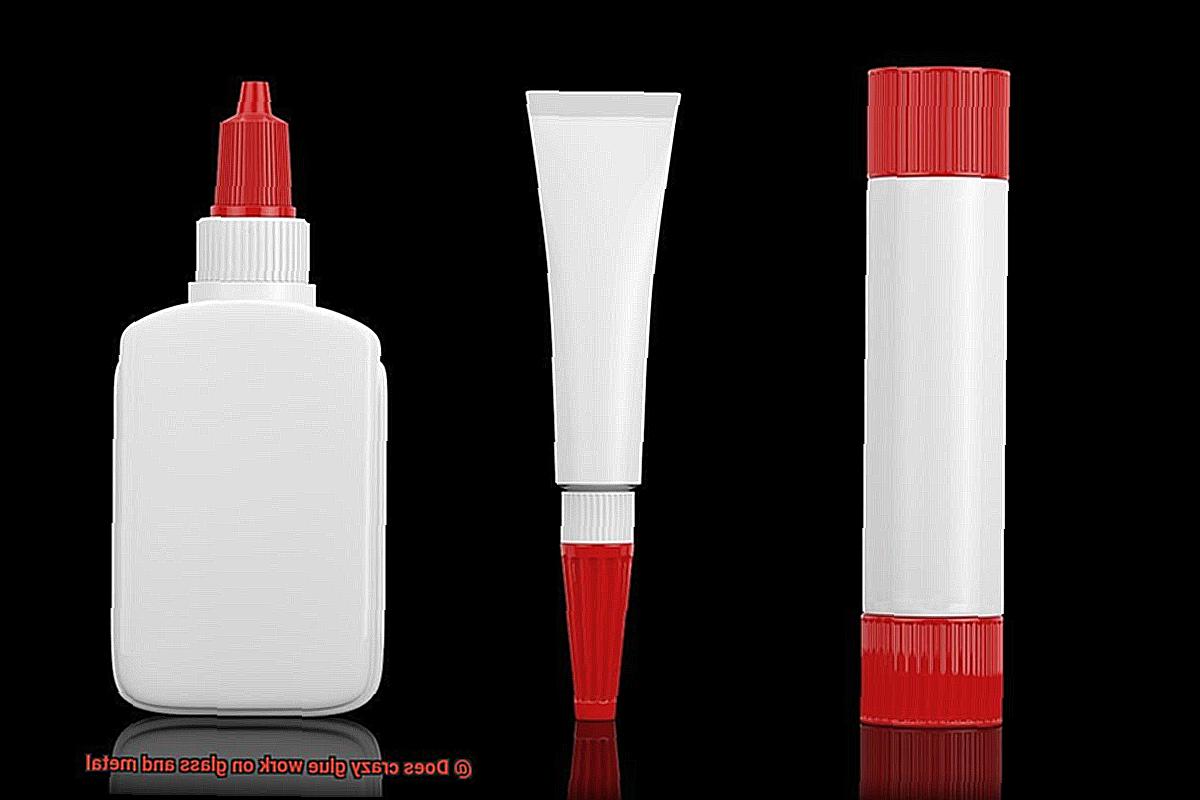
While Crazy Glue is a powerful ally, it may not be suitable for bonding heavy or load-bearing metal objects. For such weighty applications, specialized metal adhesives or welding techniques are recommended. Remember, it’s all about choosing the right tool for the job.
Step 6: Breaking Free
Should you need to part ways with your Crazy Glue bond, fear not. Removing it from a metal surface can be a daunting task, but not an impossible one. Acetone or nail polish remover can dissolve and liberate the glue. Always test these solvents on an inconspicuous area first to ensure they won’t tarnish the metal surface.
Enhancing Bond Strength with Special Techniques
Are you tired of your glue losing its grip on glass and metal surfaces? Looking for ways to take your bonding game to the next level? Look no further. In this article, we will explore some special techniques that can enhance the bond strength of crazy glue, ensuring a strong and long-lasting hold.
- Surface Preparation: The key to a strong bond is proper surface preparation. Before applying crazy glue, it is crucial to clean the surfaces of both the glass and metal thoroughly. Remove any dirt, debris, or oils that may hinder the bonding process. Isopropyl alcohol or acetone can be used to degrease the surfaces, ensuring better adhesion.
- Roughening the Surface: Sometimes, smooth surfaces can be tricky to bond. To overcome this challenge, try roughening the surface slightly. Use sandpaper or a fine-grit abrasive pad to create a textured surface. This provides more area for the glue to adhere to, resulting in a stronger bond.
- Primer Application: When dealing with challenging materials or when an extra-strong bond is desired, consider using a primer. Primers are specially formulated adhesives that promote adhesion between the glue and the substrate. They create a chemical bond that enhances overall bond strength, ensuring a reliable and durable hold.
- Activator Utilization: To enhance the curing process and improve bond strength, try using activators. Apply them to one or both surfaces before using crazy glue. Activators promote faster curing of the glue by initiating a chemical reaction. This allows the glue to cure quickly and form a stronger bond, even in challenging conditions.
- Heat-Assisted Bonding: Heat can be a game-changer when it comes to enhancing bond strength. By applying controlled heat to the bonded area, the glue cures faster and forms a stronger bond. However, caution must be exercised to avoid overheating and damaging the materials. Heat-assisted bonding is particularly effective for heat-resistant materials like glass and metal.
- Clamping or Weighted Pressure: Don’t underestimate the power of pressure. Applying clamping or weighted pressure ensures that the surfaces are in close contact, allowing the glue to spread evenly and bond effectively. This technique is especially useful when working with uneven surfaces or challenging materials. Be mindful to use appropriate pressure and avoid damaging the materials.
Limitations of Using Crazy Glue on Glass and Metal
Imagine the scene: a shattered glass ornament or a broken metal figurine lies before you, and you turn to your trusty bottle of crazy glue. While it may seem like a quick solution, using crazy glue on glass and metal surfaces comes with its fair share of limitations. Let’s delve into the world of adhesives and discover why crazy glue isn’t always the superhero it claims to be for these materials.
The Glass Conundrum:
Glass surfaces, smooth and non-porous as they are, pose a formidable challenge for crazy glue. With minimal surface area to grip onto, the adhesive’s effectiveness is compromised, resulting in a weaker bond that may buckle under stress or pressure.
Battling the Heat Wave:
Extreme temperatures act as kryptonite for crazy glue on glass and metal surfaces. As these materials expand and contract with temperature fluctuations, the adhesive struggles to cope. The bond weakens or breaks altogether, leaving you in a sticky situation.
Metal Matters:
Not all metals are equal in their compatibility with crazy glue. Certain metals sport protective coatings or oxidation layers that hinder the adhesive’s ability to form a secure bond. In such cases, opting for an adhesive specifically designed for bonding metals is the wise choice.
Moisture and Chemicals – The Arch-Nemeses:
Crazy glue displays poor resistance to moisture and chemicals, further limiting its effectiveness on glass and metal surfaces. Prolonged exposure to water or liquids weakens the bond over time, while certain chemicals cause the adhesive to deteriorate or lose its efficacy.
Strength in Moderation:
While crazy glue excels in smaller and lightweight applications, it may lack the strength required for heavy-duty tasks involving glass or metal. Securely holding larger or heavier pieces together demands a more resilient and reliable adhesive capable of withstanding the load.
Alternatives to Crazy Glue for Bonding Glass and Metal
When it comes to bonding glass and metal, there are numerous alternatives to Crazy Glue that can provide even better results. Let’s explore some of these options and discover the amazing world of alternative adhesives.
- Epoxy Adhesive: This versatile adhesive consists of two components – resin and hardener – which, when mixed together, create a strong and durable bond. Epoxy is known for its resistance to water, heat, and chemicals, making it an excellent choice for glass and metal bonding. Its longer curing time allows for better alignment of the surfaces you’re bonding.
- UV-Curing Adhesive: This nifty adhesive requires exposure to ultraviolet light to initiate the curing process. It’s fast, it’s strong, and it’s perfect for precision bonding or applications where a clear bond line is desired. Just make sure you have access to a UV light source before diving into your project.
- Silicone Adhesive: If flexibility and temperature resistance are what you’re after, silicone adhesive might be the answer. Silicone adhesives provide excellent adhesion to both glass and metal surfaces and can handle thermal expansion and contraction like a champ. They may not be suitable for high-stress applications due to their lower tensile strength.
- Double-Sided Adhesive Tapes: For temporary or non-permanent bonding, double-sided adhesive tapes are a fantastic alternative to Crazy Glue. These tapes offer a strong bond without the hassle of mixing or curing. Plus, they can be easily removed without leaving any residue or damaging the surfaces, making them ideal for reversible or temporary applications.
- Welding and Soldering: While primarily used for bonding metal, welding and soldering can also be combined with adhesives for glass and metal bonding. Welding involves melting and fusing metal surfaces together, while soldering uses a lower melting point metal alloy to join the surfaces. These methods are perfect for larger metal pieces or when a super-strong bond is required.
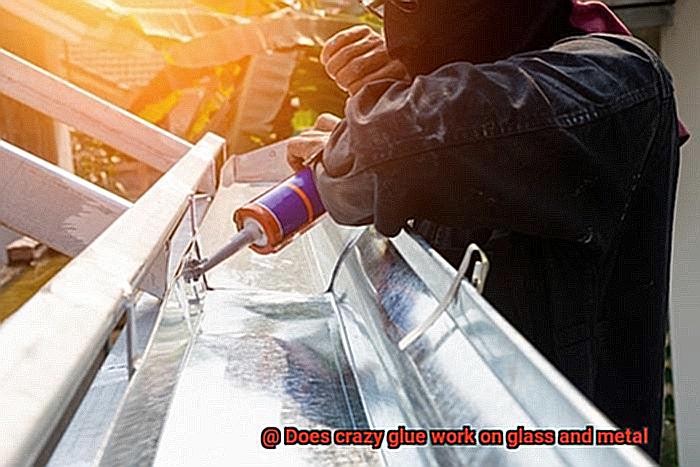
Remember to consider factors like bond strength, temperature resistance, curing time, and flexibility when choosing the right adhesive for your project. Proper surface preparation and cleaning are also crucial for achieving a successful bond, no matter which adhesive you choose.
zXDb4cBewGo” >
Also Read: Does Krazy Glue Work on Metal?
Conclusion
In conclusion, crazy glue is indeed effective for bonding glass and metal.
Its powerful adhesive properties create a strong and durable bond that withstands the test of time. Whether you’re repairing a broken glass ornament or fixing a metal hinge, crazy glue provides a reliable solution.
Its ability to adhere to these surfaces with precision ensures that your repairs will hold up under pressure.

